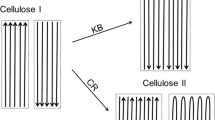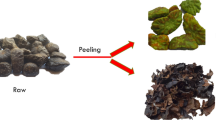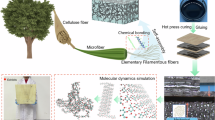Abstract
THE ability of cellulose to take up salts from aqueous solutions and retain them upon drying is well known, but little has been shown as to the condition in which they are retained. The following possibilities which might be distinguished by X-ray analysis are suggested: (1) a mechanical holding, in which both cellulose and the salt retain their original structure; (2) a reaction forming a new structural arrangement; (3) a molecular or ionic dispersion of the salt throughout the cellulose units, the cellulose being structurally unchanged. It has just come to our attention that Ruff, Ebert, and Luft (Z. anorg. allgem. Chem., 170, 49; 1928), in an X-ray study of salts adsorbed on activated carbon, found in the majority of cases no evidence of the presence of the salts in their crystalline state. This observation would correspond to the third possibility.
This is a preview of subscription content, access via your institution
Access options
Subscribe to this journal
Receive 51 print issues and online access
$199.00 per year
only $3.90 per issue
Buy this article
- Purchase on SpringerLink
- Instant access to full article PDF
Prices may be subject to local taxes which are calculated during checkout
Similar content being viewed by others
Author information
Authors and Affiliations
Rights and permissions
About this article
Cite this article
ABORN, R., DAVIDSON, R. X-Ray Studies of the Structure of Salts Adsorbed on Cellulose. Nature 122, 440 (1928). https://doi.org/10.1038/122440a0
Issue date:
DOI: https://doi.org/10.1038/122440a0



